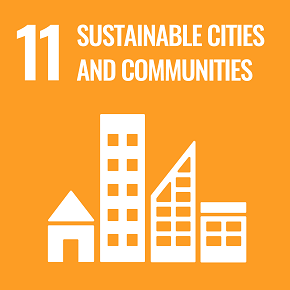Risk ManagementGovernance
At Sagawa Express, in addition to minimizing damage from tangible risks, we ensure appropriate risk management and take measures as necessary to enable early recovery and business continuity.
Related SDGs
- We have formulated the Risk Management Regulations to ensure appropriate, efficient risk management, and have built a robust risk management system. Further, we take appropriate measures to deal with risks that have the potential to damage our corporate management, business activities, and corporate image, as well as risks that could have a significant impact on society.
- We regularly host Risk Management Meetings to prevent risks from materializing and minimize such risks and to reduce any damage caused by them. In this way, we are working to reinforce our risk management system.
- We have formulated a Business Continuity Plan (BCP) to minimize interruptions to our business activities and fulfil our social responsibility in the event of an emergency. We have also built and operate a Business Continuity Management (BCM) system.
Risk Management/ Business Continuity Plan (BCP) Systems
SG Holdings' Director is responsible for promoting Groupwide risk management, and the individuals and organizations responsible for risk management are as below.
- Group Risk Management Supervision Manager
Director in charge of Management and Control at SG Holdings - Risk Management Supervision Manager
Head of division with jurisdiction over risk management - Risk Management Supervision Department
Division with jurisdiction over risk management - Risk Management Manager
Head of division with jurisdiction over important risks
SG Holdings Group Risk Management System

Risk Management in Times of Normality
In times of normality, we use the following process to manage risks at each Group company. We first determine the risks and use a so-called risk map to analyze the level of impact and frequency of each risk. Based on the results, we list the risks in order of priority and take measures as necessary.
By sharing each Group company's risks at the quarterly Group Risk Management Meetings, we are implementing effective, efficient Groupwide risk management.
Risk Management Process
| Recognition | Determine and consolidate management of risks |
|---|---|
| Assessment | Use the risk map to visualize level of impact, frequency, and in turn priority
|
| Countermeasures | Take measures based on order of priority |
| Review | Review recognition, assessment, and countermeasures every quarter |
Business Continuity Management (BCM) and Business Continuity Plan (BCP) for Large-scale Disasters and Accidents
Due to the nature of its business in logistics, the SG Holdings Group recognizes that risks related to disasters and accidents can have a particularly major impact on its operations. To ensure business continuity during disasters and accidents such as large-scale earthquakes, fires, explosions, and floods, the Group has formulated a BCP that clarifies every process from initial response to the resumption of operations. The Group also places emphasis on BCM to ensure that the BCP functions appropriately.
Safety Confirmation Drills
For all group employees in Japan, we conducted response training twice, using Safety Check Systems. Based on the BCP, we have set a target rate of 90% for responses within 24 hours after the occurrence of an incident.
BCP Drills
Once a year the SG Holdings Group hosts joint BCP drills. In FY2018, SG Holdings and 18 Group companies participated in these drills, which simulated progressive, complex disasters such as large-scale typhoons and urban floods, both of which have been increasing in frequency in recent years. (Drills were suspended in FY2019 to prevent the spread of the COVID-19 pandemic)
SG Holdings Group BCM System (Japan)


